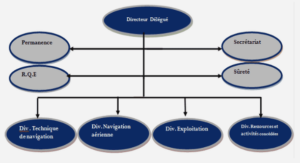Opportunities for
Leagile Supply Chain Although the benefits of LSC are undeniable, its shortcomings are also well-noted. Chantarachalee, Carvalho, & Cruz-Machado (2014) stressed that LSC lacks external responsiveness to customer demands, which requires flexibility in product design. Similarly, Banomyong & Supatn (2004) doubted that LSC “itself does not guarantee a response to the flexibility of demand.” In the early 1990s, the U.S. launched its reaction to the rapid growth of Japanese industry. Agile Manufacturing (AM) was built up as the counterpart of LM. Opposite to the mentioned weakness of LM, AM has the “capability to survive and prosper in a competitive environment of continuous and unpredictable change by reacting quickly and effectively to changing markets.” (Angappa, 1998) As mentioned by Richards (1996), the modern view considers agile supply chain (ASC) as a substitute to leanness. Yet, AM’s weakness of significant cost was soon revealed.
Thus, Mason-Jones, Naylor, & Towill (2000) prospected that “once leanness has been achieved, the SC must fight for agility” as “pure leanness and agility can seldom be found in real-world problems” (Kisperska-Moron & De Haan, 2011). To take advantage of the two models, while reducing the disadvantages from each, Naylor, Naim, & Berry (1999) introduced the Leagile (LA) paradigm which combined lean and agile through decoupling points (DP). The new model created a management revolution in making it competitive and more profitable (Madhani, 2017). Boschi, Borin, & Batocchio (2011) specified that concurrent engineering in LA SCM generates the joint development of products and services to respond to market demand. The exemplar of the LA model is also Toyota, the cradle of LM. For instance, Cherise (2017) compared car brands and found that just in that year, Toyota offered a wide variety of hybrid vehicles in higher quality than Ford with eight line-up hybrid cars, while Ford introduced just four. In particular, even the lowestranked hybrid of Toyota, the Prius c, still better than other competitors. Thus, it might be a big challenge for businesses to compete with Toyota, the LA flagship.
Opportunities for Leagile Resilient Green Supply Chain Notably, LSC was evaluated as a high-risk sensitive system and perhaps even dangerous (Guy & Jennifer, 2013). Purvis, Spall, Naim, & Spiegler (2016) asserted the common belief that the pursuit of cost reduction through LM implementation in a ‘boom’ period resulted in economic pains in 2007 and made SC lack resilience and too fragile. Although LA SC can cover some shortages of lean and agile models, it still has two fatal weaknesses of lean while keeping very few, or zero inventory upstream of the DP. First, it bears the risk of disruption from uncertainties; and second, it is difficult to recover once disrupted. As a result, the leaner it is the more vulnerable it is to risks (Christopher & Peck, 2004a). Taha, Abdallah, Sadek, El-Kharbotly, & Afia (2014) realized the increasing research awareness of risk and uncertainty in SC in the past 20 years resulting from the trend of LM applications. Besides, the rising frequency of billion-dollar disaster events from 1980 to 2016 has caused massive SC disruptions worldwide (Smith, 2018). As the rearrangement and recovery costs in disrupted lean systems were very expensive (Garcia-Herreros, Wassick, & Grossmann, 2014) Also, Kim et al. (2004) advised enterprises and SCs to develop the responding capacity to risk and uncertainty through robustness and resilience. Recently, environmental issues have become one of the current topics of discussion.
Enterprises have experienced an increase in environmental awareness (Kawitkar, 2013) from consumers, communities and governments. The study expressed the change of customers’ purchasing behaviour through a survey in the 90s, in which up to 83% of respondents preferred to buy environmentally safer products. Besides, some international organizations such as the United Nations Framework Convention on Climate Change (UNFCCC) hold annual Conference of the Parties (COP) to seek commitments from nations to protect the environment. For instance, COP 22 in 2016 provided measures to reduce greenhouse emissions and utilize low-carbon energy sources. In Canada, the government has set a target of reducing Canada’s total greenhouse gas emissions by 17% by 2020 relative to 2005 emission levels (https://www.ec.gc.ca). Driven under such intense pressure, companies now attempt to adjust their activities to an environmentally responsible manner like the introduction of green products (Kawitkar, 2013). Presently, businesses must compete not only on pricing, but also on the ability of customization while bearing an environmentally conscious image and self-protecting from threats. Reaching the first two goals is the main work of LA strategies, while attaining the third task is functioned through the green strategy on SC.
Generally, green supply chain (GSC) “strives for minimal environmental impact” by “managing the product after its useful life while helping the environment.” (Jain & Sharma, 2014) It is an increasingly discussed topic nowadays (Amirbagheri, Núñez-Carballosa, Guitart-Tarrés, & Merigó, 2019). GSC practices reap the rewards from both environmental and cost performances (Cousins, Lawson, Petersen, & Fugate, 2019) and can be integrated with lean under the supporting, and synergistic categories (Ciccullo, Pero, Caridi, Gosling, & Purvis, 2018). Nowadays, there is an increasing tendency of the integrating four paradigms: lean, agile, resilience and green (LARG), into a hybrid SC to take advantage of them (Akbarzadeh, Safaei, Madhoushi, & Aghajani, 2019). The LARG model was first introduced in 2009 by Carvalho & Machado (2009), and several years later Akbarzadeh et al. (2019) pointed out that LARG SCM was an appropriate approach for confronting the challenges of today’s turbulent and uncertain environments. They also stated that this field still contains many uncovered gaps. Combined from the four advanced management models, LARG SC is expected to have the capacity of coping with the problems of the dairy industry: “more efficiency in order to produce lower-cost products, quick response to customers’ diversified demands, reduce disruption and risks in supply, produce and distribute perishable products, and also produce organic products with environment-friendly packaging and so on” (Pieter van Donk, Akkerman, and Van der Vaart (2008).
Opportunities for Optimization by Meta-Heuristic Approach According to Melo, Nickel, & Saldanha-da-Gama (2008a), the solution method for SCM problems consists of two main categories: 1.) exact solution, and 2.) heuristics. The former has been studied and used long before the latter became popular. A heuristic is “any approach to problem solving or self-discovery that employs a practical method, not guaranteed to be optimal, perfect, logical, or rational, but instead sufficient for reaching an immediate goal.” (https://en.wikipedia.org/wiki/Heuristic) Developed from heuristics, metaheuristic (MH) is a “higher-level procedure or heuristic designed to find, generate, or select a heuristic (partial search algorithm) that may provide a sufficiently good solution to an optimization problem, especially with incomplete or imperfect information or limited computation capacity.”
(Balamurugan, Natarajan, & Premalatha, 2015)
The advantage of MHs over heuristics is that they ‘‘perform a much more thorough search of the solution space, allowing inferior and sometimes infeasible moves, as well as re-combinations of solutions to create new ones.” (Jiang, Huang, & Wang, 2010) Tiwari, Raghavendra, Agrawal, & Goyal (2010) saw the growing tendency of using MH for complex SCM problems. In those cases, where a global optimum cannot be found by exact methods, MH can offer the two benefits of: 1.) providing acceptably good solutions, and 2.) consuming relatively little processing time (Griffis, Bell, & Closs, 2012). These advantages of MH are proved in solving the famous problem of SCM, the Travelling Salesman Problem (TSP). In TSP, a salesman travels make a round tour throughout a number of defined cities in doing his business. He has to choose the best route to optimize the travelling distance, cost and time.
The problem was classified as an NP-complete problem (‘‘the deterministic polynomial time problem, where each input to the problem should be associated with a set of solutions of polynomial length, whose validity can be tested quickly in polynomial time”, (Wikipedia.com). In 2001, one TSP of 15,112 cities was solved by an exact solution, namely the cutting-plane method, on 110 Alpha processors of 500 MHz. The total computation time was around 22.6 years for each processor (David, Robert, Vašek, William, & Keld, 2004). Then, Rego, Gamboa, Glover, & Osterman (2011) found that the heuristic approach could quickly define and yield good solutions (just 2–3% away from the optimal solution) even for an extremely large TSP with a million nodes. As MH can deal with some large, complex and nonlinear-natured problems, it became a preferred method to manage complex real-world cases (Griffis et al., 2012). Some MHs surpass even certain optimization softwares like CPLEX, as shown in the study of Miao, Yang, Fu, & Xu (2012), or LINGO, from Fathian, Jouzdani, Heydari, & Makui (2018), in solving SCM problems. So far, up to 80 different MHs have been introduced in which more than thirty MHs have been applied to solve problems in SCM (APPENDIX II, p.175).
INTRODUCTION |





